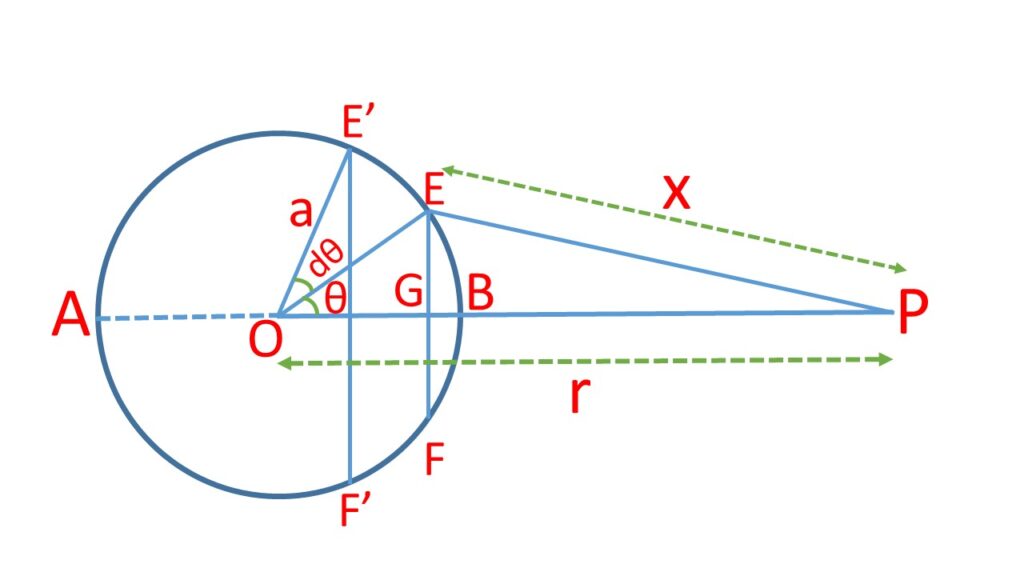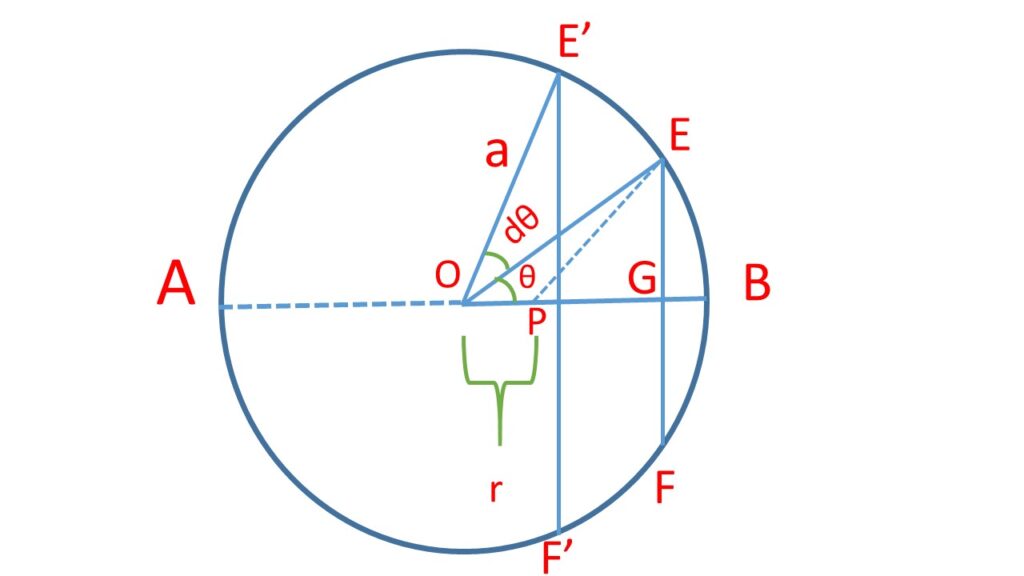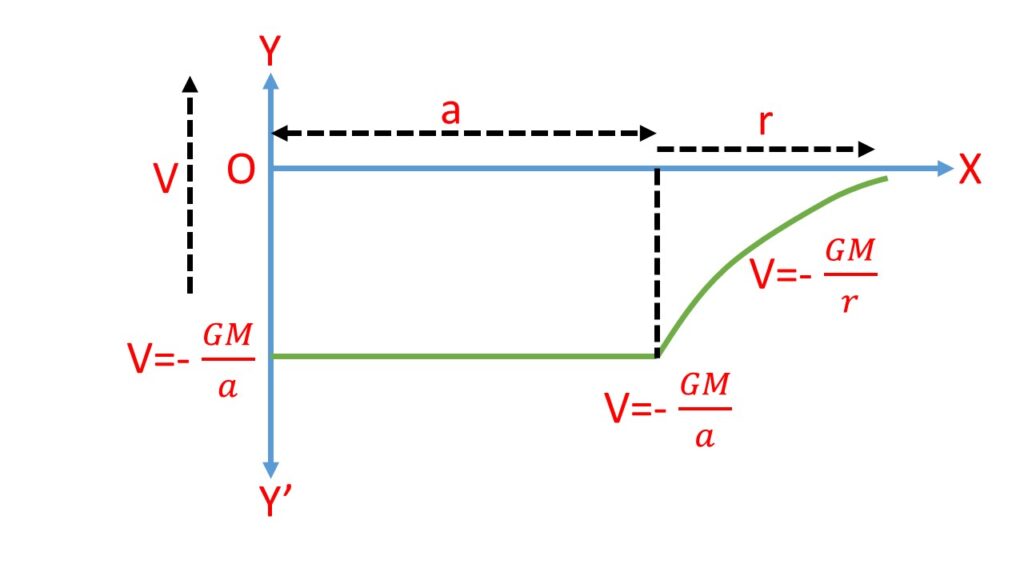Gravitational Potential Due To A Thin Uniform Spherical Shell:
Let us consider a thin spherical uniform shell of radius \( a \), surface density \( \sigma \). Let \( P \) is a point at a distance \( r \) from the centre \( O \) of the shell.
To find the potential at the point \( P \), let us divide the shell into a large number of thin rings by the planes perpendicular to OP.
Let us consider a ring \( EFF’E’ \) of radius \( EG=a\cdot\sin\theta \), and the thickness \( EE’=a{\cdot}d\theta \)., where \( \theta \) and \( d\theta \) are the angles subtended by the ring at the centre \( O \).

The surface area of the ring is \( 2\pi{\cdot}a\sin\theta{\cdot}a\ d\theta = 2\pi{a^2}\sin\theta{d}\theta \)
Mass of the ring is \( 2\pi{a^2}\sin\theta\ d\theta{\cdot}\sigma \)
Gravitational potential at \( P \) due to the ring is \( \displaystyle{dv=-G\frac{2\pi{a^2}\sin\theta\ d\theta\ \sigma}{x}} \).
where \( x \) is the distance of every point on the rim of the ring, \( G \) is the gravitational constant.
Now from \( \triangle{EOP} \),
\( {EP}^2 \\={OE}^2+{OP}^2-2\ {(OE)}\ {(OP)}\ \cos\theta \)or, \( x^2=a^2+r^2+2ar\cos\theta \)
Differentiating both side, \( 2x\,dx=2ar\sin\theta\,d\theta \), where \( a \) and \( r \) are the constants.
\( or,\ x\,dx=ar\sin\theta\,d\theta \\ or,\ \sin\theta\,d\theta=\frac{x}{ar}\,dx \) \( \displaystyle{\,dv=-G\frac{2\pi{a\sigma}}{r}\,dx} \)(i) When the point \( P \) is outside the shell.
The total potential at \( P \) is given by,
\( V=-G\frac{2\pi{a}\sigma}{r}\displaystyle\int_{r-a}^{r+a}\,dx \\= -G\frac{2\pi{a}\sigma}{r} (r+a-r+a)\\= -G\frac{2\pi{a}\sigma}{r}2a\\= -G\frac{4\pi{a}^2\sigma}{r} \) \( or,\ V=-\displaystyle\left(\frac{GM}{r}\right) \)where \( M=4\pi{a}^2\sigma \) is the total mass of the thin spherical shell.
Here, for an external point, the spherical shell behaves as if its whole mass is concentrated at the centre.
(ii) When the point \( P \) is on the surface of the shell:
In this case \( r=a \), and the total potential at \( P \) is given by,
\( V= -G\frac{2\pi{a}\sigma}{r}\displaystyle\int_{0}^{2a}\,dx \\ = -G\frac{2\pi{a}\sigma}{r}2a\\= -G\frac{4\pi{a}^2\sigma}{r} \) \( or,\ V=-\frac{GM}{r} \) \( or,\ V=-\displaystyle{\frac{GM}{a}} \)In this case also the mass of the shell may be considered to be concentrated at the centre of the shell.
(iii) When the point \( P \) is inside the shell:
Now the point \( P \) is inside the shell, so the total potential at \( P \) is given by,
where the limit of integration extended from \( PB=(a-r) \) to \( PA=(a+r) \)
Now, \( V=-G\frac{2\pi{a}\sigma}{r}(a+r-a+r) \\=-G\frac{2\pi{a}\sigma}{r}2r\\=-G4\pi{a}\sigma\\=-G\frac{4\pi{a}^2\sigma}{a} \)
\( V=-\displaystyle\left(\frac{GM}{a}\right) \)
Thus the potential at any point inside shell is consant and is equal to that of the surface.
The graphical representation of potential with distance due to a thin uniform spherical shell is shown in the adjoining (Fig. 3)
